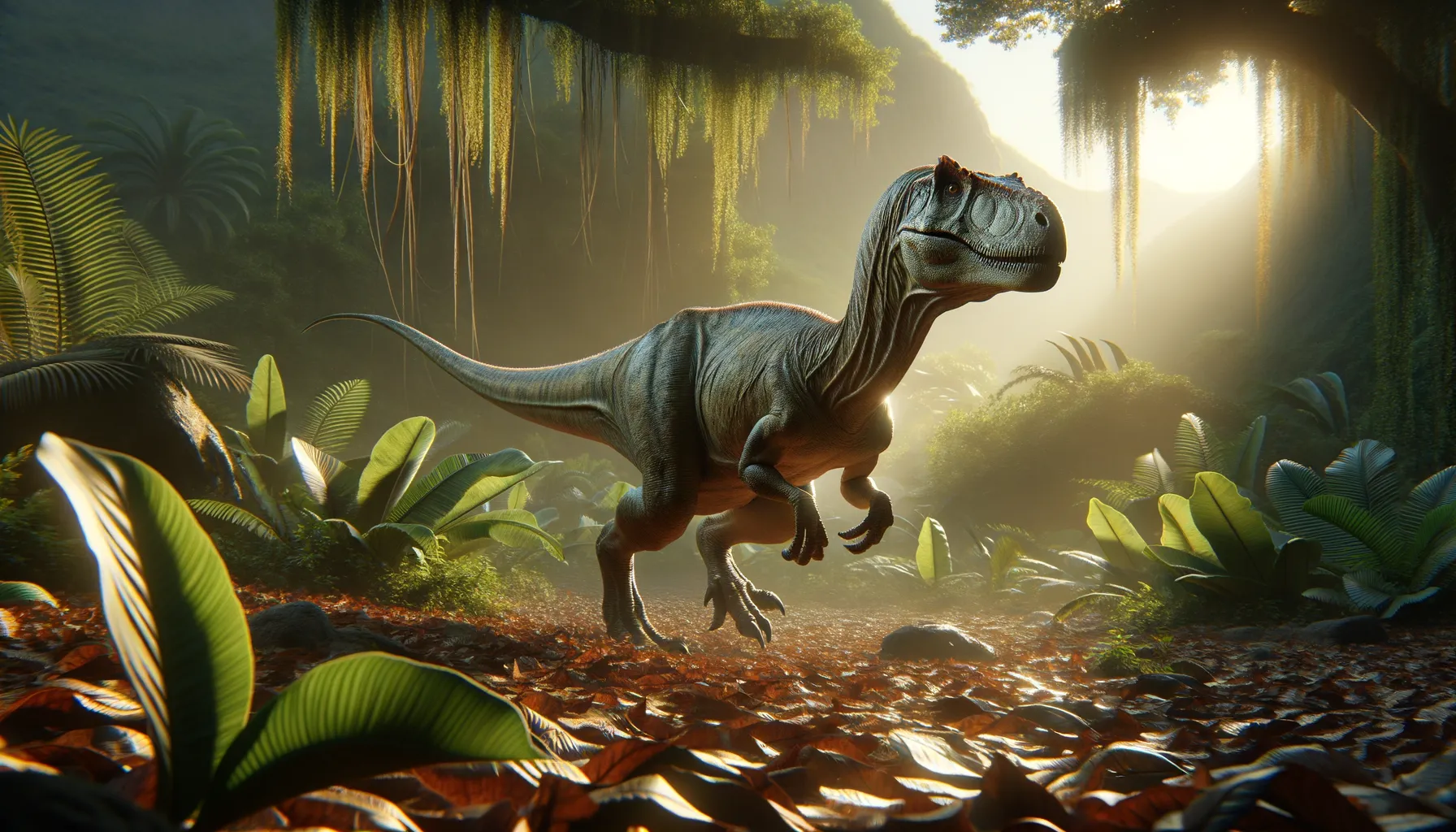
Aliwalia
Exploring the roots of predator lineage.
Period
Triassic
Length
Roughly 3 to 4 meters long.
Height
Approximately 1.5 meters tall at the hips.
Weight
Estimated to weigh around 70 kilograms.
Aliwalia is a lesser-known carnivorous dinosaur that lived during the late Triassic period. Notable for its slender and agile frame, it likely roamed the ancient lands of what is now South Africa. Considered a basal theropod, Aliwalia has provided crucial insights into the evolution of larger predatory dinosaurs. Though its fossil record is limited, each discovery contributes to understanding these primitive carnivores.
Diet
Aliwalia was a carnivore, feeding primarily on smaller vertebrates. Its diet would have included animals like small reptiles and early mammals living in its ecosystem.
Hunting
It likely hunted using speed and agility, ambushing prey with swift movements. Aliwalia's sharp teeth suggest a proficiency in gripping and tearing flesh.
Environmental challenges
During the Triassic period, Aliwalia faced a rapidly changing environment with fluctuating climates. It had to adapt to diverse conditions ranging from arid landscapes to dense forests. The presence of numerous competing predators would have posed a significant challenge for survival. Changes in prey availability due to climate shifts would also have required diet and hunting adaptations.
Speed
Likely a swift runner due to its slender build.
Lifespan
Estimated at around 20 to 30 years.
First discovery
Discovered in 1981 in the Elliot Formation, South Africa.
Fun Facts
- Aliwalia was one of the earliest dinosaurs and lived during the Late Triassic period, over 200 million years ago.
- Its name, Aliwalia, means 'different from others' due to its unique characteristics among early dinosaurs.
- Aliwalia was a small theropod dinosaur, which are typically known for being bipedal meat-eaters.
- Fossils of Aliwalia were discovered in South Africa, pointing to the diverse dinosaur populations on the ancient supercontinent of Pangaea.
- Though initially thought to be a member of the larger dinosaur group Allosauridae, later studies have changed its classification.
- The unique nature of Aliwalia's fossils makes it an interesting subject for paleontologists studying early dinosaur evolution.
- Despite being an early dinosaur, Aliwalia had a structure that hints at the agility and predatory skills seen in later, more advanced theropods.
Growth and Development
Aliwalia likely hatched from eggs, similar to other theropods. Young Aliwalia would have experienced rapid growth to outpace potential predators. Developmental stages might have included shifts in agility and strength to adapt to different hunting strategies over time. Fossil evidence may indicate growth rings, shedding light on how it matured in its prehistoric environment.
Habitat
Aliwalia inhabited regions that are now part of South Africa, which during the Triassic featured varied landscapes. These areas included lush forests and river systems, providing ample hunting grounds. Such habitats supported a range of prey, contributing to its survival as a predatory dinosaur. As habitats evolved, Aliwalia adapted to new environmental offerings and challenges.
Interaction with other species
As a predator, Aliwalia interacted with various prey species, often shaping their populations. Competition with other carnivores might have driven its evolution toward greater speed and efficiency. Relationships with prey and competitors would have structured the ecological balance of its environment. Fossil records imply both predatory dominance and cooperative niche adaptation.
Natural lifespan
Aliwalia's natural lifespan likely spanned 20 to 30 years.
Reproduction
Aliwalia probably reproduced by laying eggs in nests protected by vegetation or burrows. Sexual dimorphism might have existed, evident through varied physical features in males and females. Guarding behavior, parental care, or communal nesting could have increased offspring survival rates. Fossilized eggs, if found, could provide further insight into its reproductive strategies.
Social behaviour
While data is limited, Aliwalia may have exhibited some social behaviors, such as group hunting. Communication might have occurred through vocalizations or physical signals. Group dynamics in hunting or territory defense could have improved survival. Possible pack-like structures could have been present, as evidenced by similar theropod behaviors.
Fossil locations
Fossils have primarily been discovered in the Elliot Formation in South Africa. These sites are crucial for understanding early theropod evolution. Continued excavations may reveal more about its distribution and lifestyle. Regions like South Africa offer a wealth of paleontological data concerning Triassic ecosystems.
